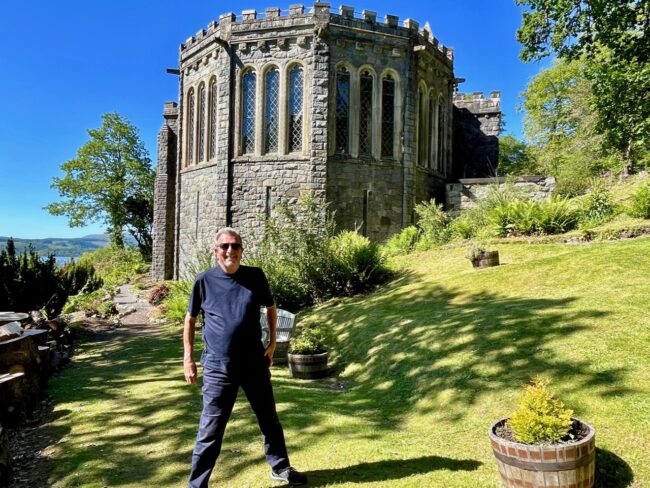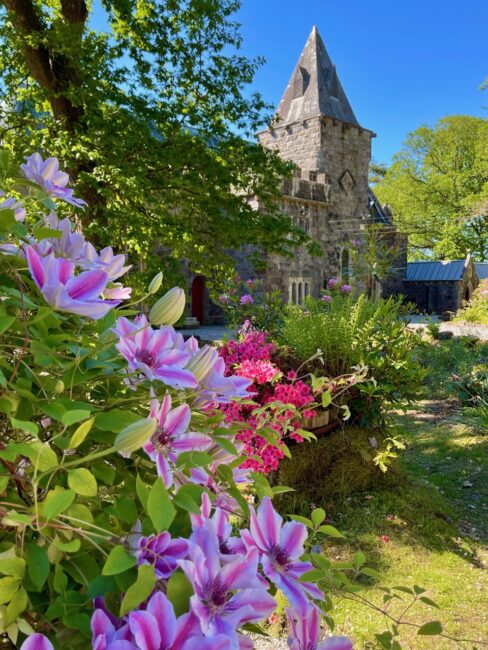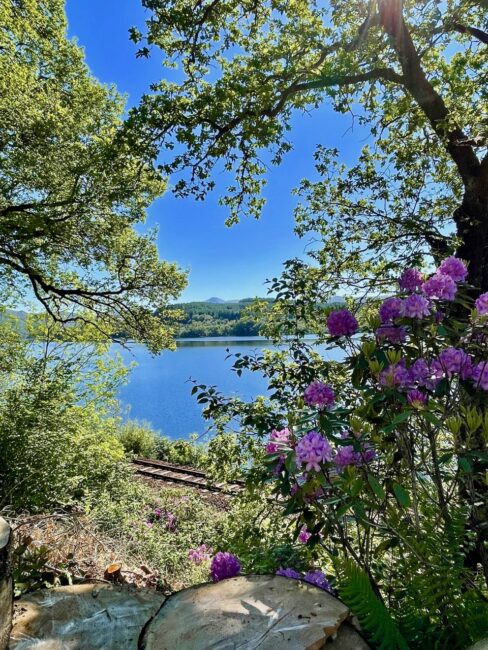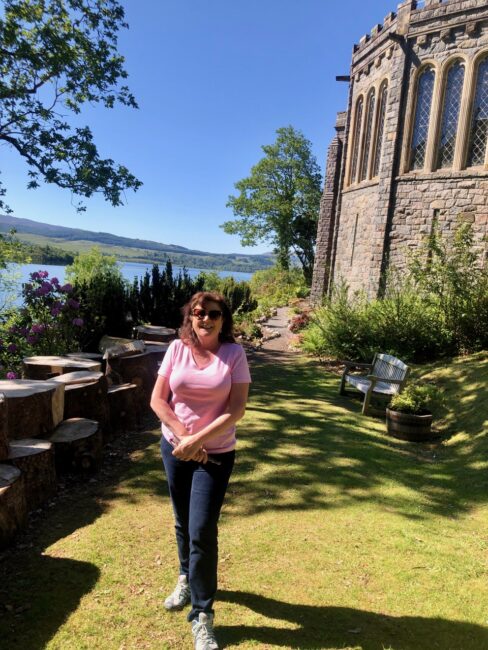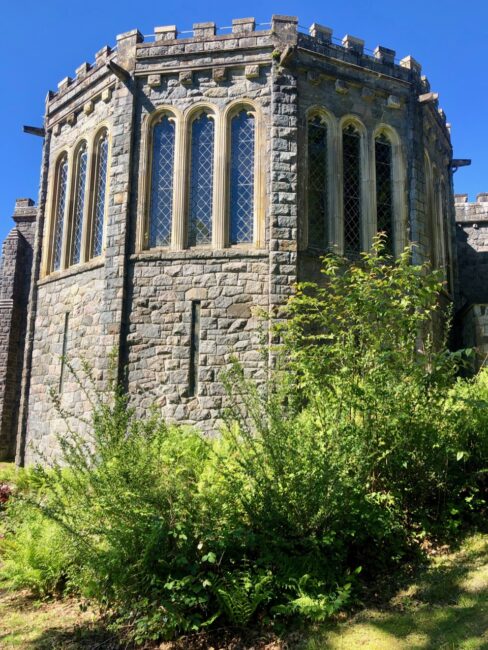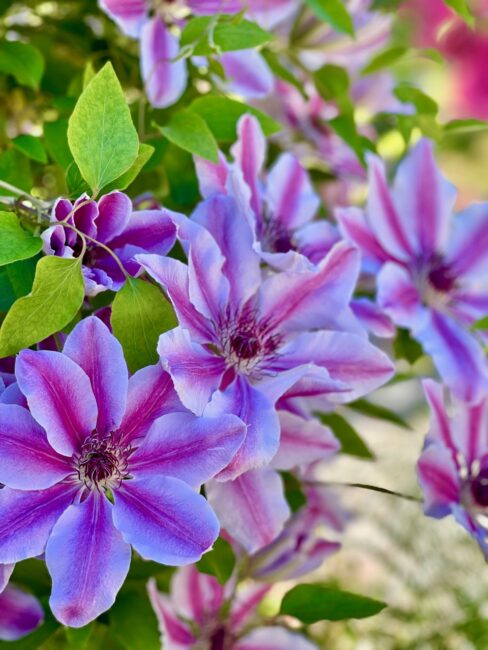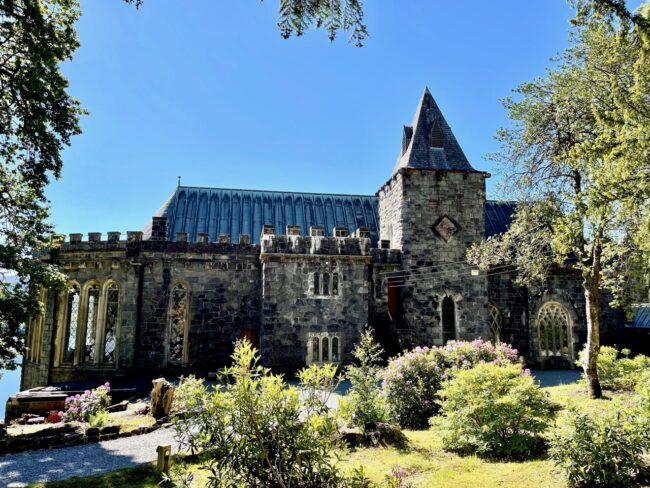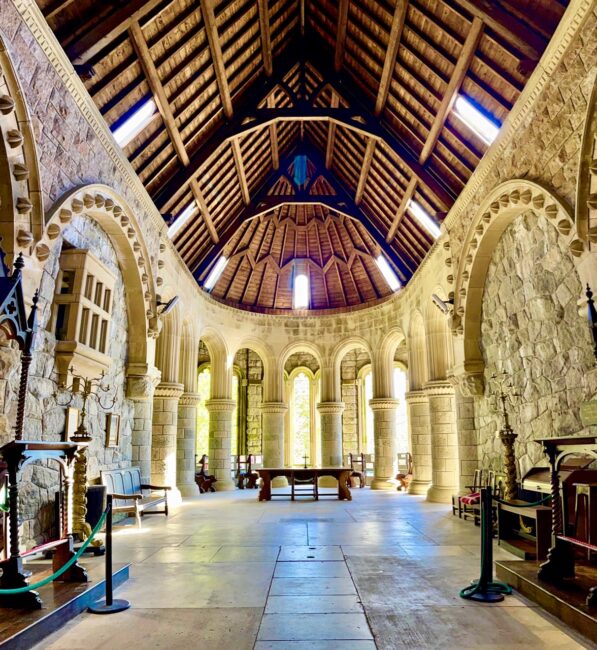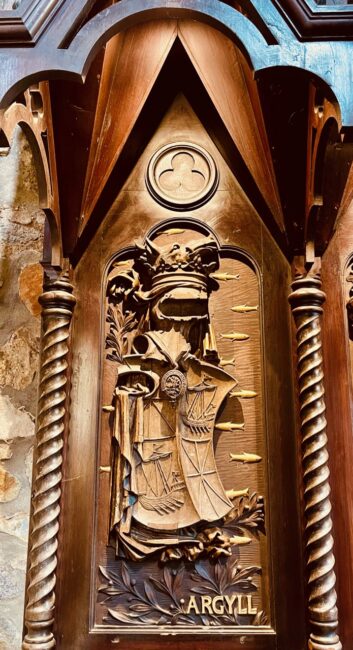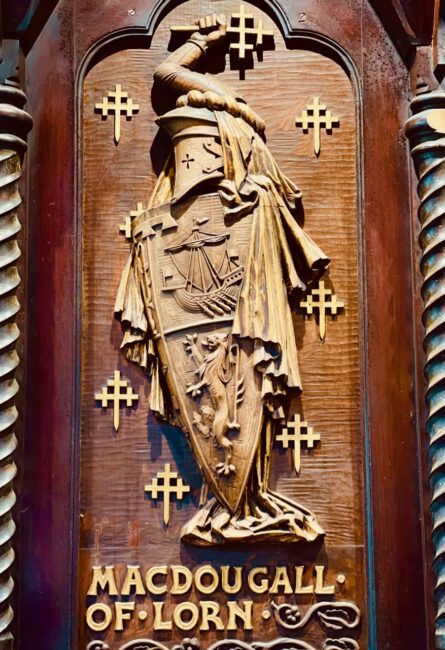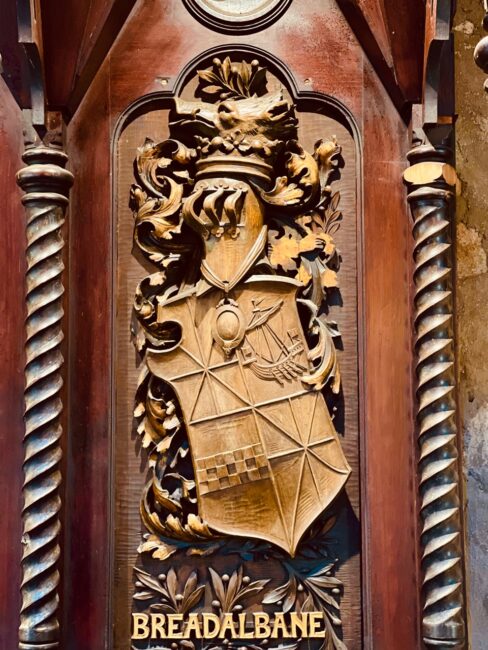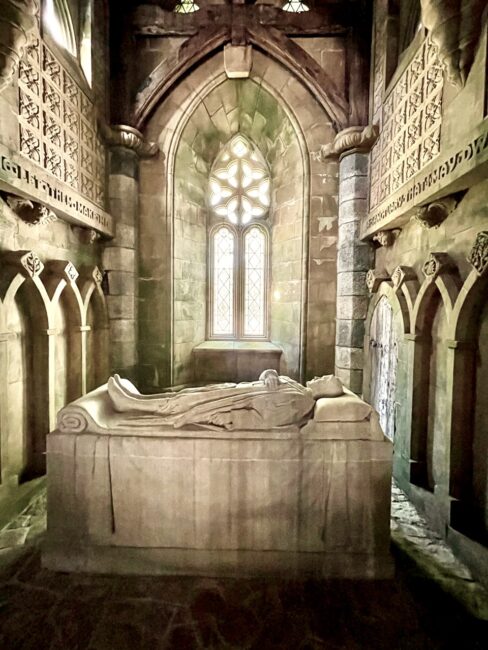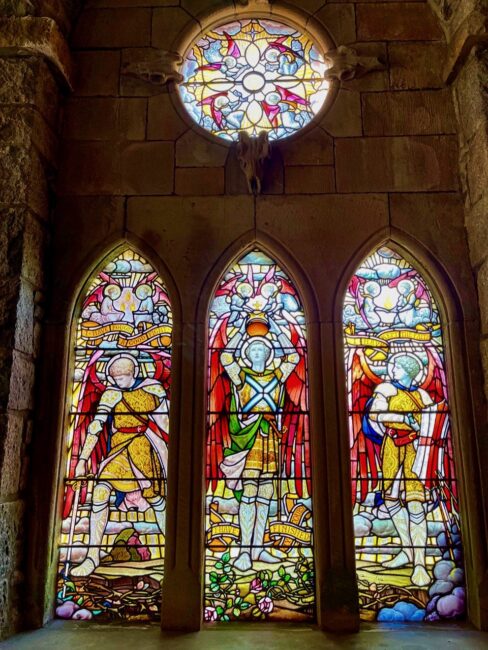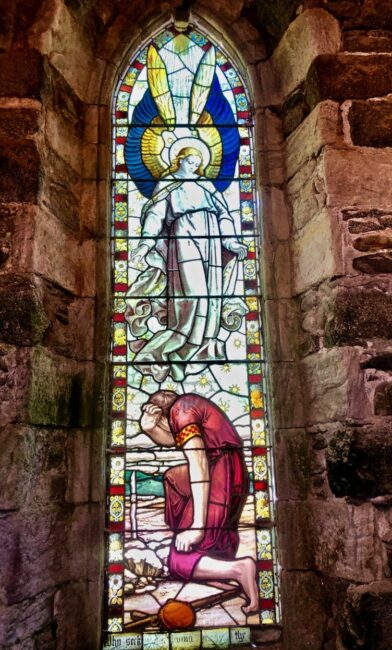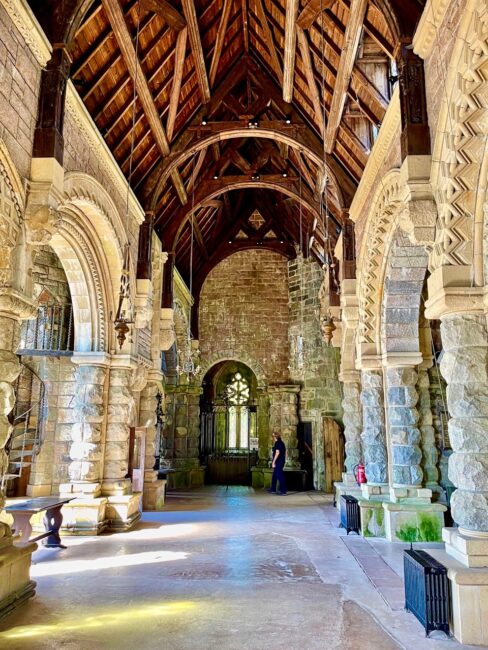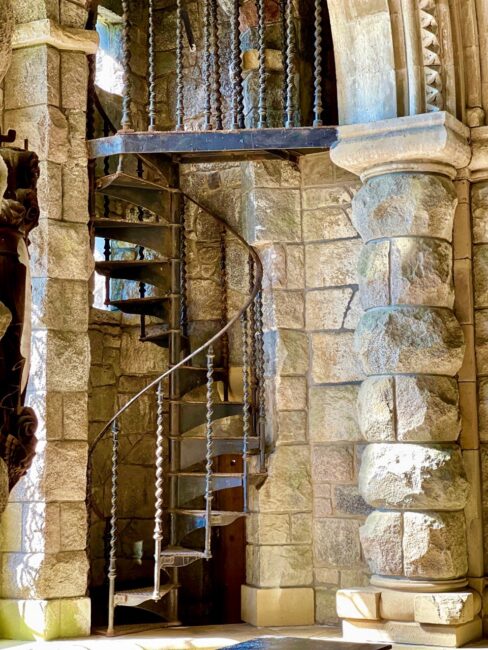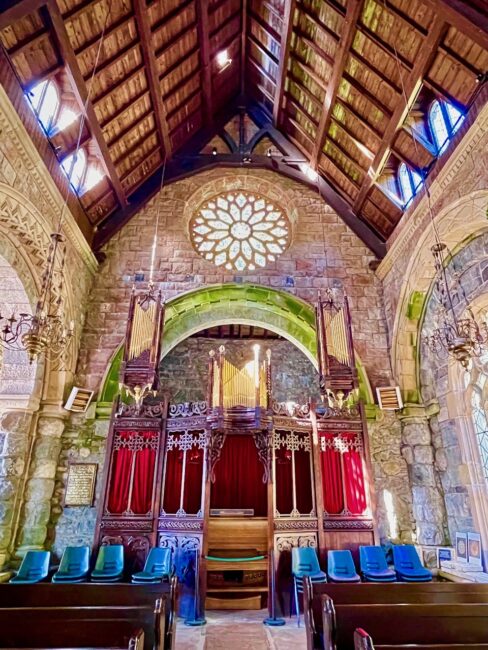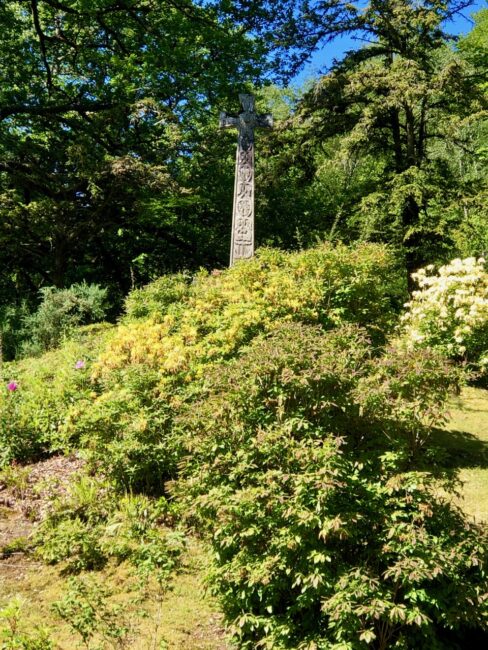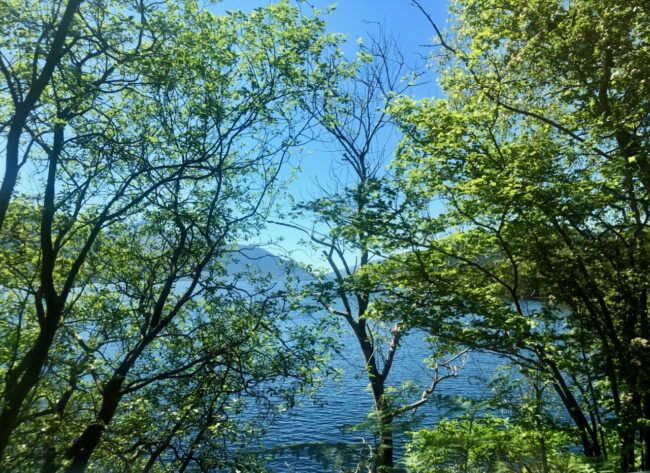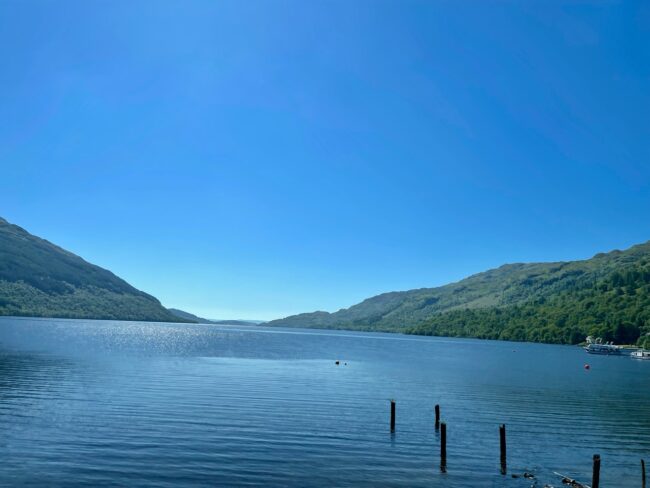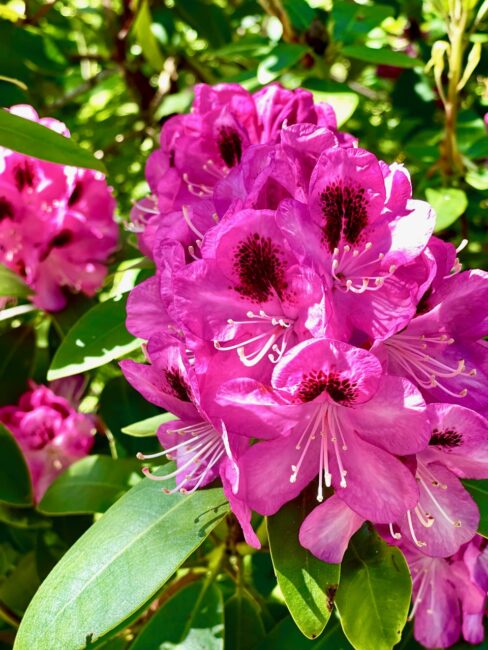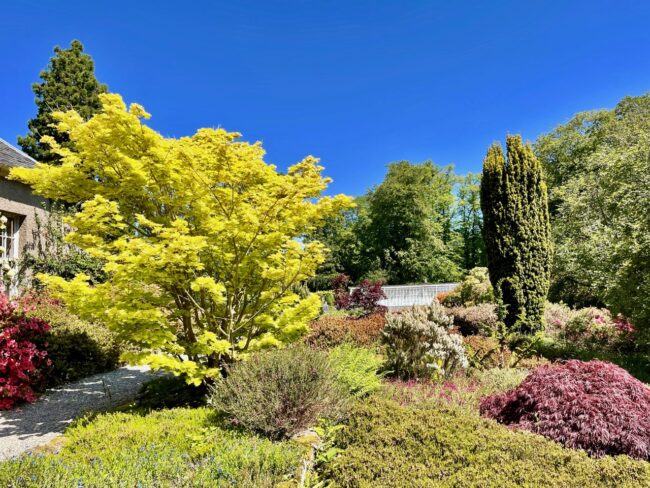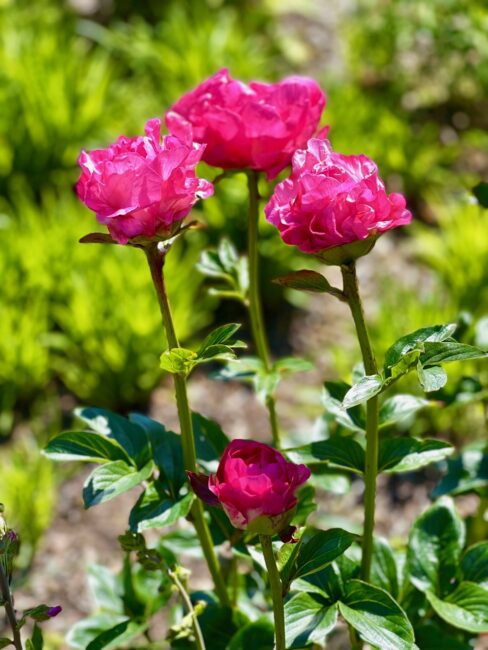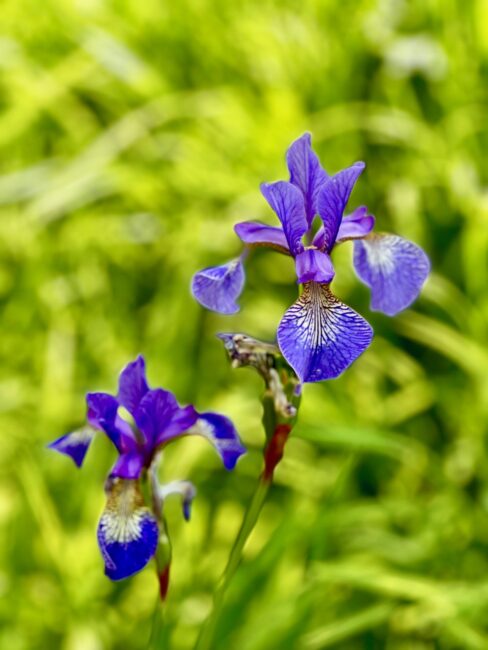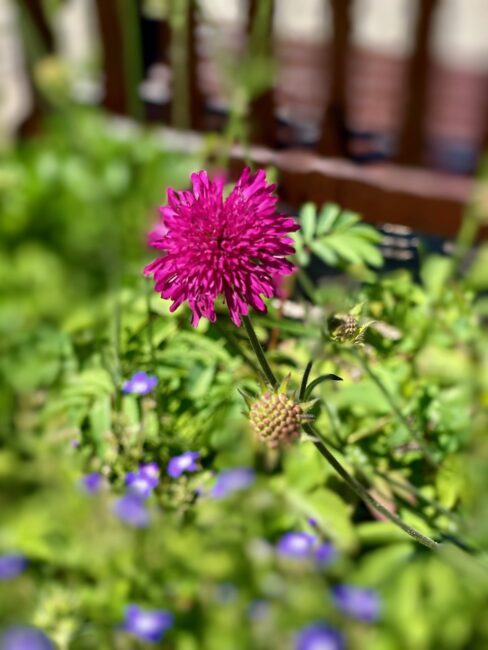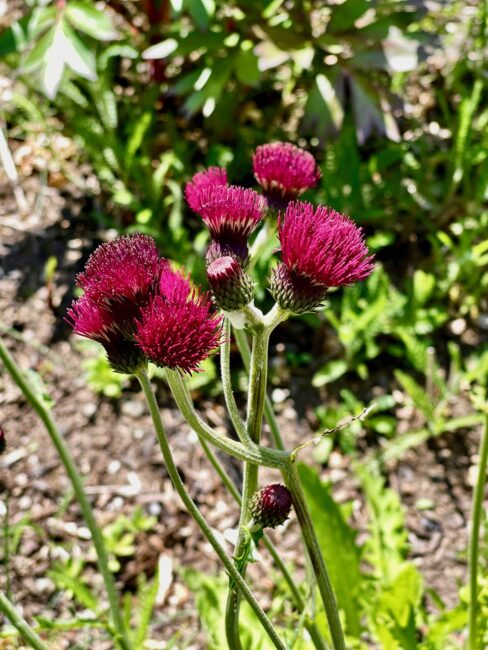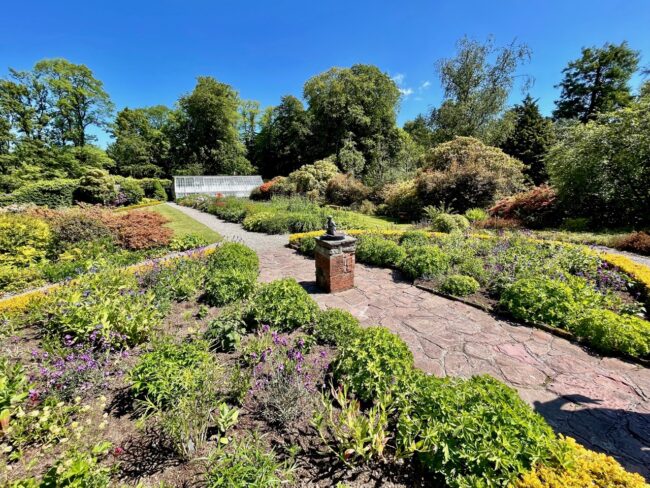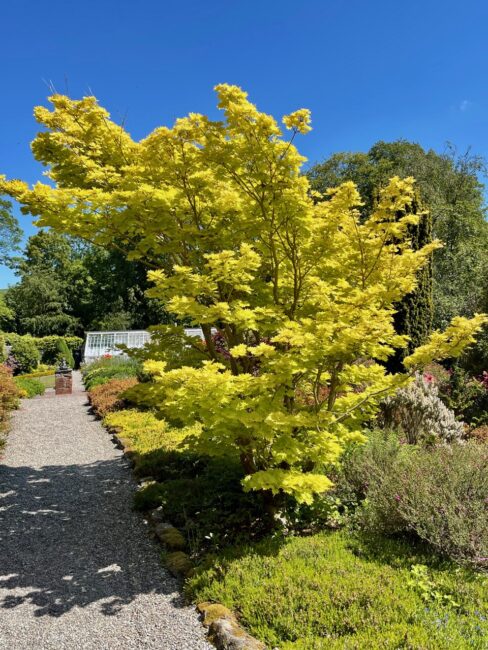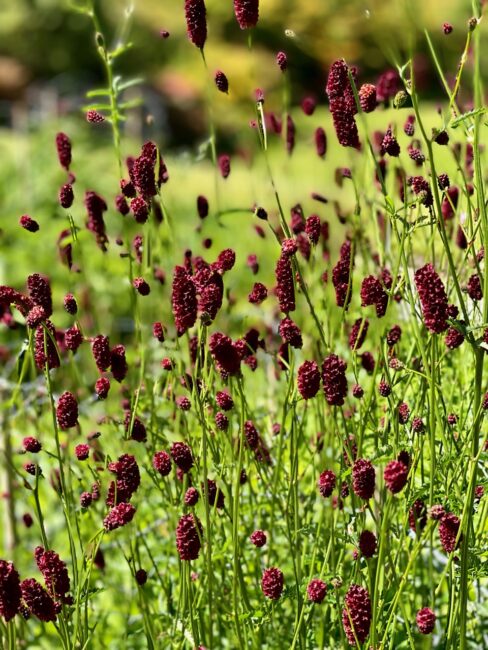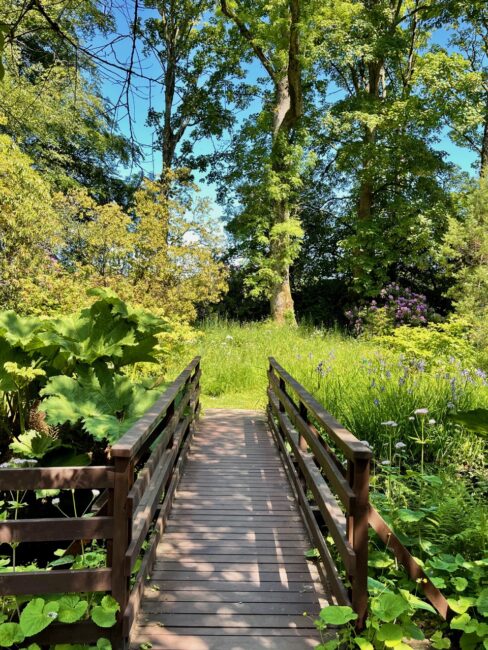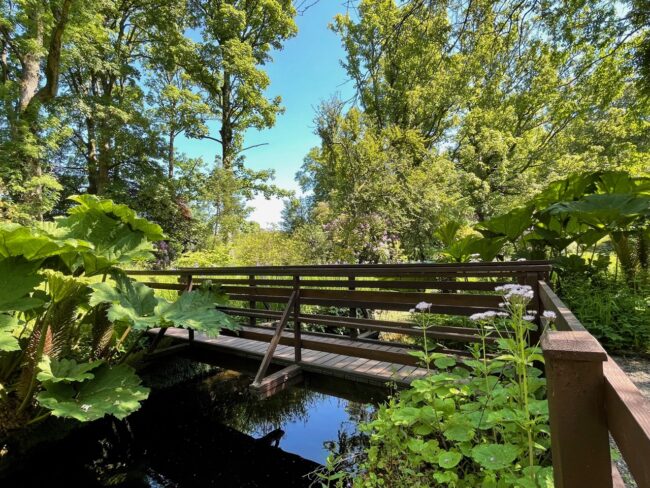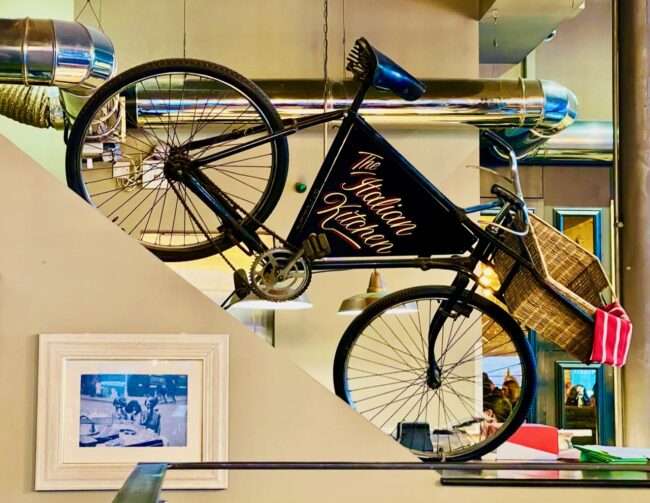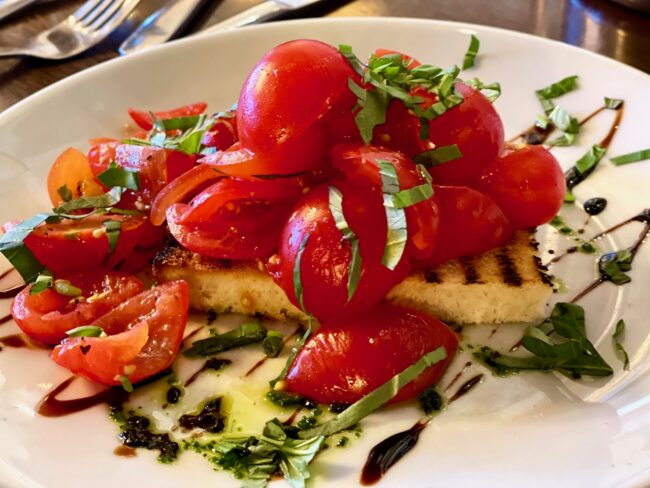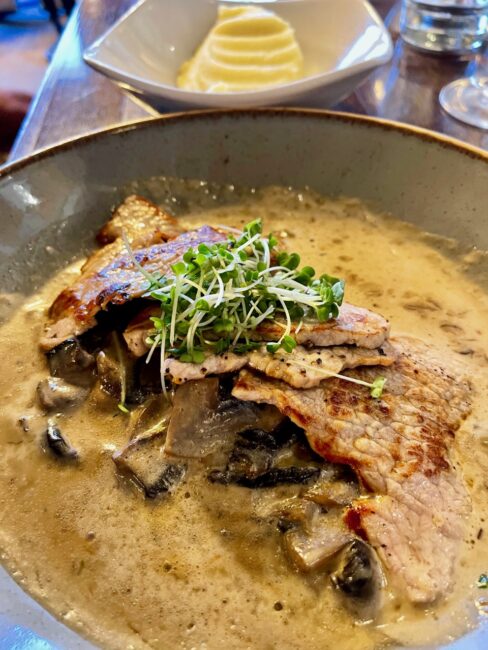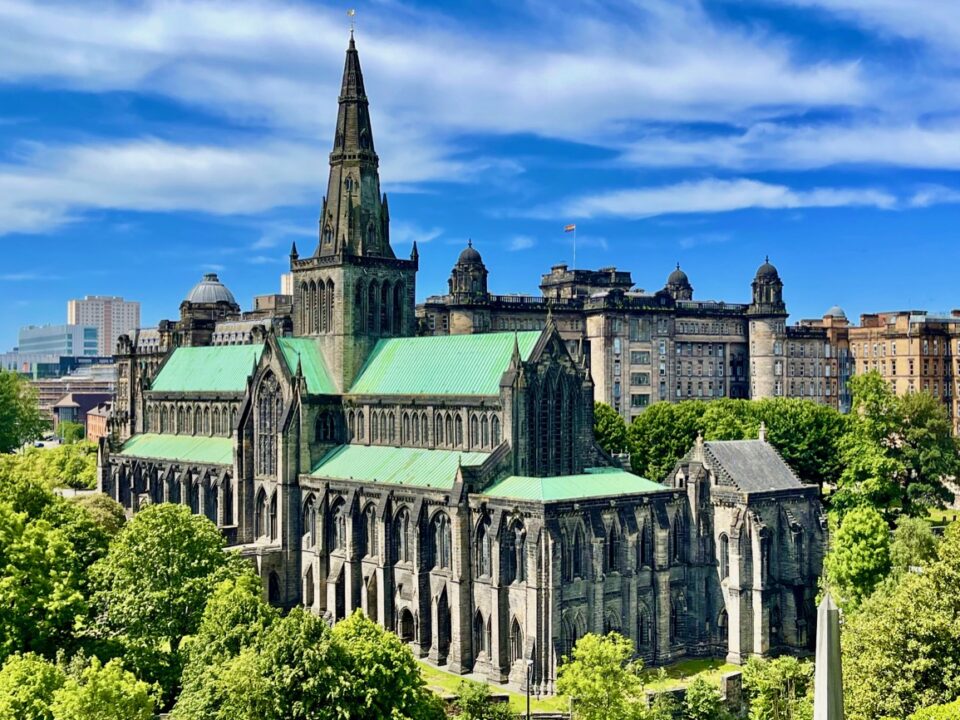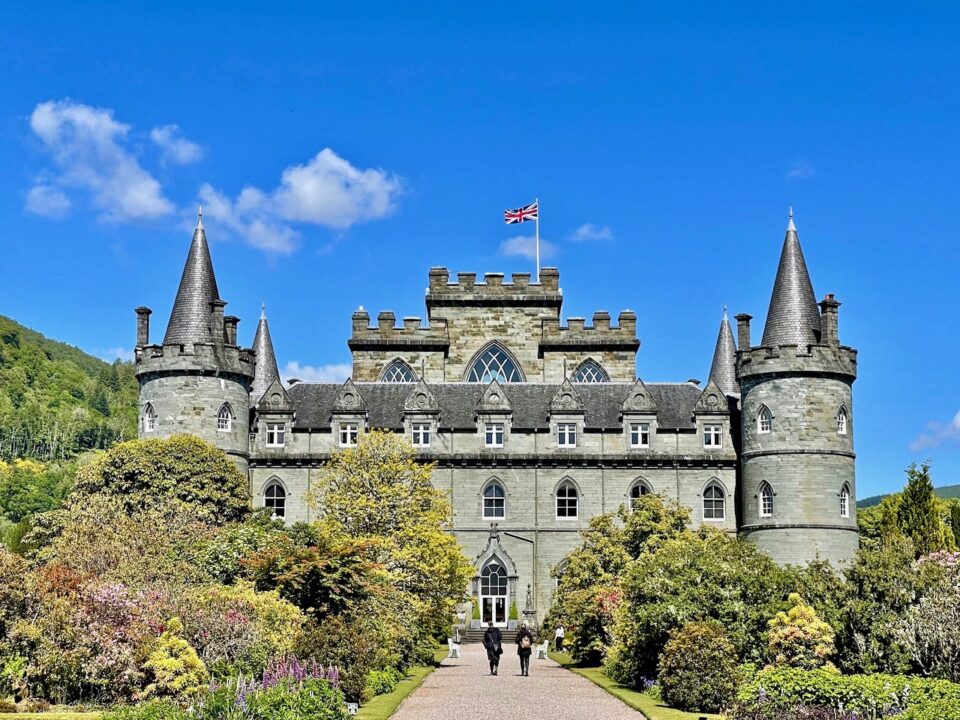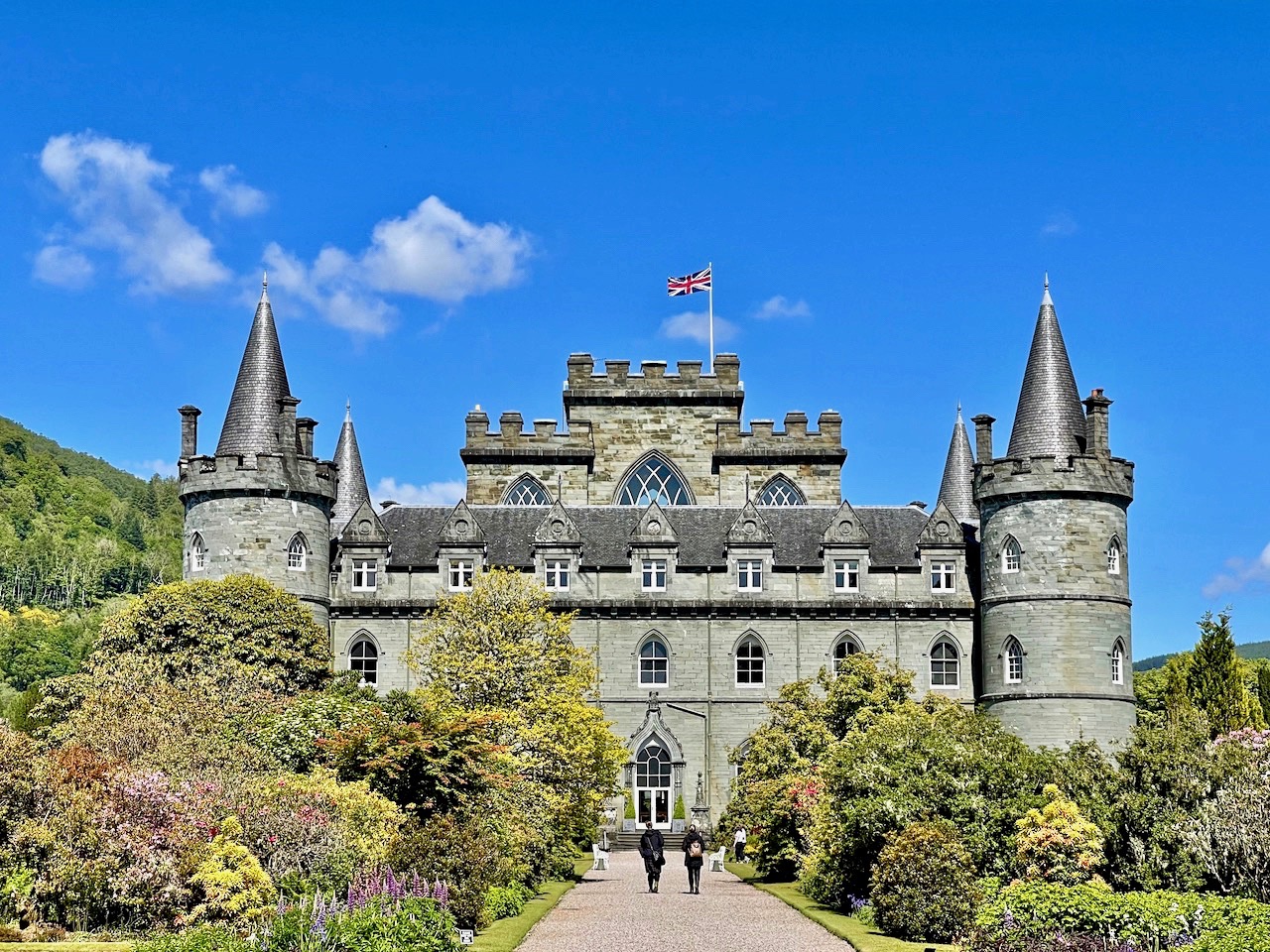
CHAPTER NINETEEN: Oban, Inveraray & In-Between
September 14, 2022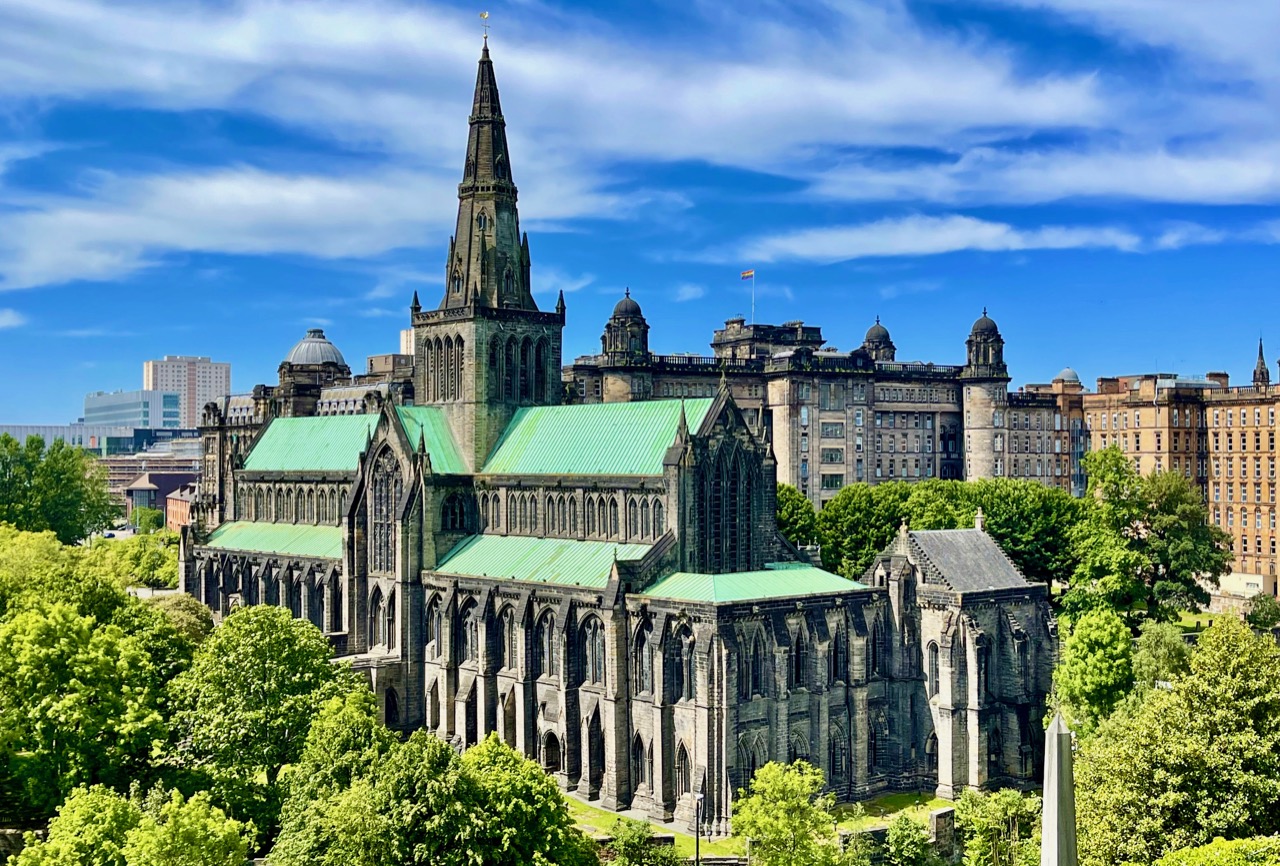
CHAPTER TWENTY ONE: Glasgow … Art, History & Dead People
October 28, 2022Surviving Mai Tai Tom’s “Royal” Blunder: 2022 England & Scotland
CHAPTER TWENTY: On To Glasgow
Day Twenty: Missed View, Conan Not The Barbarian, A Hidden Gem, Closing Early, Where’s Johnny Depp?, Chocolat Heaven, Statue Mystery Solved, More Statues By George and Our Almost Final Italian
The home stretch would begin today. Although I am far from a Vegan, the vegan breakfast at Killean was excellent. “Maybe I should start eating healthier,” I said. We all knew that would never happen.
My initial “tour guide” error of the day didn’t take too long. Our first stop was going to be a lovely little Kirk situated adjacent on Loch Awe. Along the way, we would make a stop at the viewpoint of Kilchurn Castle, built in the 1400s. I had read, “There are few more scenic castles than Kilchurn.” Unfortunately, I forgot about that fact until quite a few kilometers past the scenic viewpoint stop. Thankfully, the VisitScotland guide had a better leader.
In the tiny village of Lochawe stands St. Conan’s Kirk. It was built in a storybook setting adjacent to Loch Awe.
Before entering the kirk, which started to be constructed between 1881 and 1886, we wandered the lush surroundings.
This serene area was awash with colorful flowers.
The church itself is a mixture of numerous types of architecture, or as one website stated, “every type of ecclesiastical architecture found in Scotland.” A statue of St. Conan (who I believe is the Saint of Late Night Television unless Jay Leno is hosting) stands between the stained glass windows.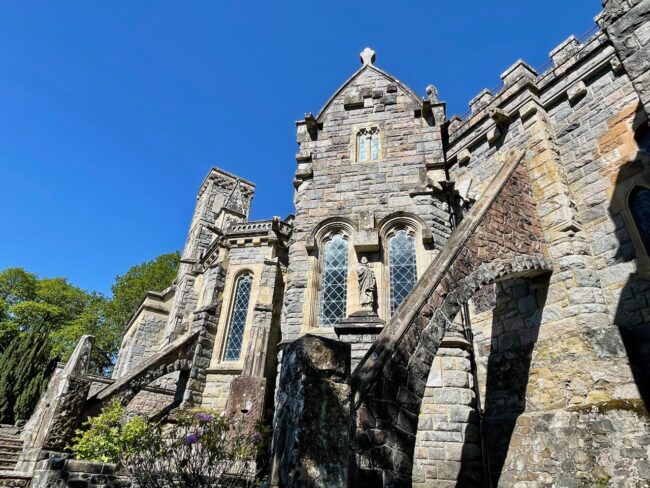
The church was expanded in the early 20th century (its builder and architect Walter Douglas Campbell was not enamored with the building), so he started an expansion project in 1907. It wasn’t until after his death that the new St. Conan’s Kirk finally had its first service in 1930. The nave and choir of St. Conan’s Kirk stops you in its tracks as you enter. The light shining throughout the interior provides interesting shadows and angles.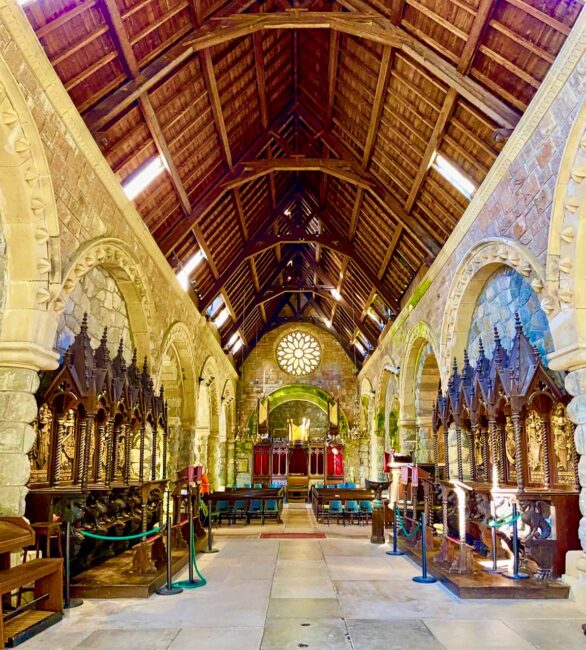
We entered the Bruce Chapel, which contains a very large effigy of King Robert The Bruce lying atop an altar tomb. The hands and face effigy are made of alabaster. The rest is stone.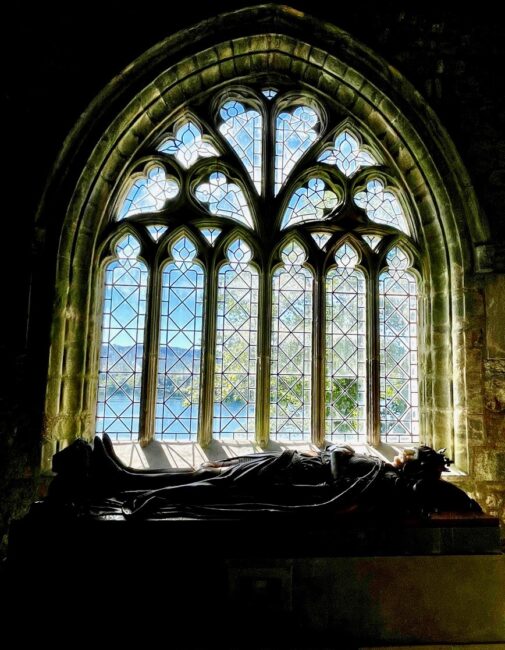
The base base of the tomb is said to be one of his bones that was taken from his skeleton at Dunfermline Abbey near Edinburgh. He has a nice view also. The window is from a Leith church built in 1483.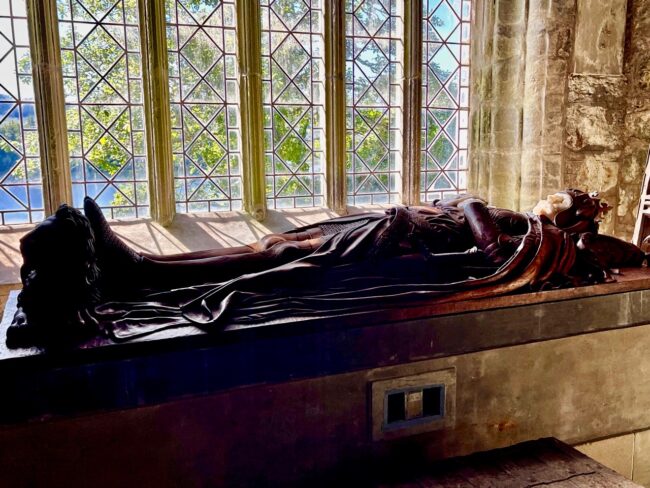
You really can never have enough pulpit photos (don’t tell Kim and Mary). 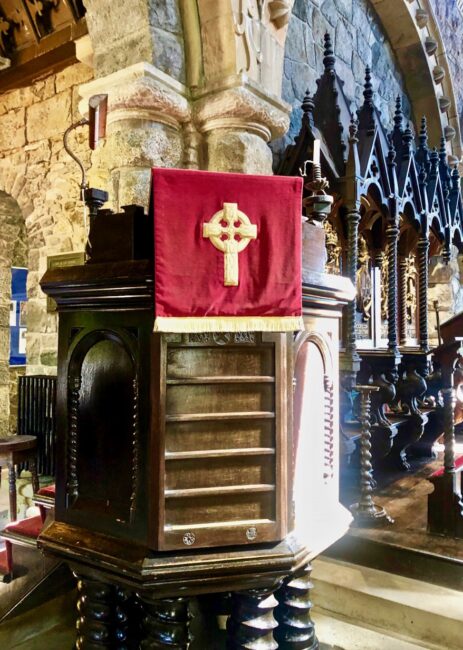
The choir stalls depict coats of arms.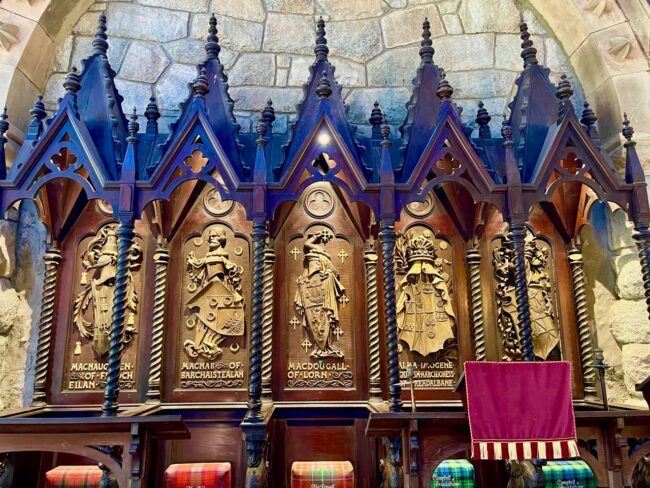
Breadalbane sounds like he should be in a Harry Potter movie or Pillsbury Dough Boy commercial.
In St. Conval’s Chapel are the remains of the Fourth Lord Blythswood. He continued working on the Kirk after Walter (and then his sister Helen) died. Who is St. Conval? Well,he has quite a backstory. Born in Ireland in the 6th century, he wanted to cross the Irish sea. In lieu of a regular boat, he was “miraculously transported across the sea on a large flat stone and landed at Inchinnan, Glasgow.” Rock on!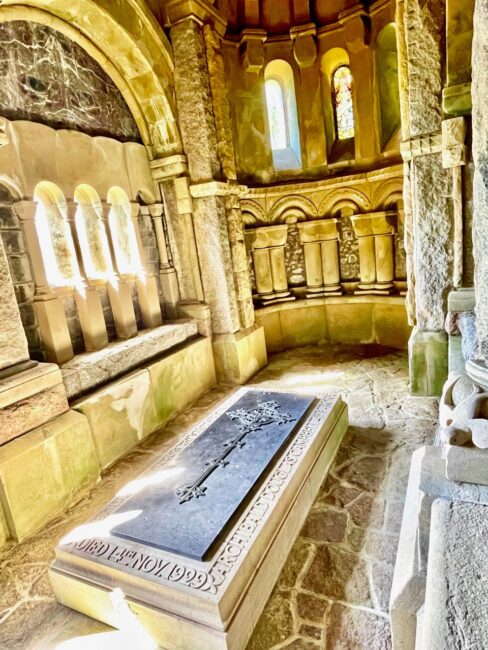
Saint Bride’s Chapel is the final resting place of Walter and Helen, who are buried below the chapel. St. Bride is the patron saint of the Douglas clan, and the saint of expensive weddings (I might be wrong on that one).
The stained glass windows were impressive.
Actually, the entire Kirk is impressive.
One last look at the beautiful interior plus a Celtic cross outside and we were back on the road admiring the gorgeous Scotland scenery.
We found ourselves driving along Loch Lomond and attempted to turnout at a couple of places to get some photos. However, this was a holiday weekend and every Scot from Bamburgh to Portree seemed to have converged at these spots along the Loch. Instead, we strapped Tracy to the roof of the car to get some photos as we traveled alongside the Loch (no member of our group were harmed or killed on our trip).
We made a concession to our photographer and stopped to visit one last garden. A few miles west of Dumbarton is Geilson Garden, which dates back more than two centuries. It would be here that Tracy got one more chance to smell the azaleas.
The gardens encompass about ten acres.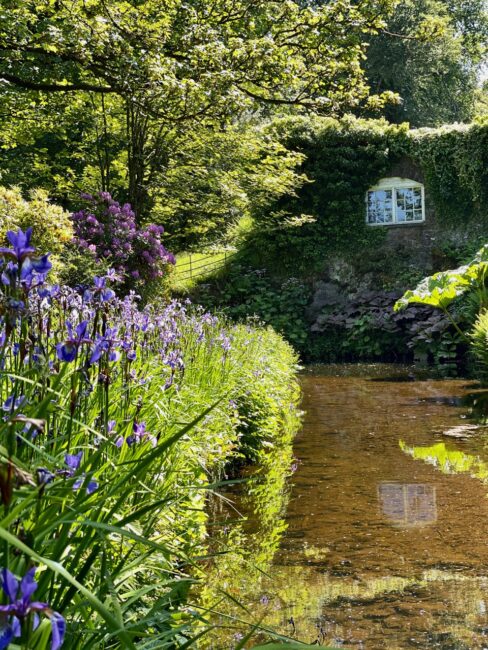
The actual Geilston House was owned by numerous wealthy merchant families until 1998, when the National Trust For Scotland took possession. It’s a tranquil spot (I guess most gardens are), and we walked through a myriad of colors of flowers that only Tracy knew what they were.
We spent about an hour here admiring the flowers …
… and trees … and more flowers …
… and hiking paths.
We had Dumbarton Castle on our radar, but of course it was closed for repairs. When it came to castles I wanted to visit on this trip, it most certainly was frustrating to find so many of them closed. After lunch in the town of Dumbarton, we headed toward Paisley Abbey and in another instance of frustration, when we looked at directions we saw that it closed at 2:30 p.m. I knew we shouldn’t have eaten.
We dropped the car at the Glasgow airport, grabbed a taxi and made our way to our final lodging of the trip, The Dakota Glasgow. We had ended are previous UK trip at the Dakota Edinburgh, and we found it the perfect place to regroup for our flights home.
As our taxi pulled in front, our driver told us that Johnny Depp had stayed there the previous night. I quipped to the group, “I wonder if there was an Amber alert.”
There was no Johnny Depp sighting, but after settling in we made a quick walk down to Buchanan Street on our way over to George Square.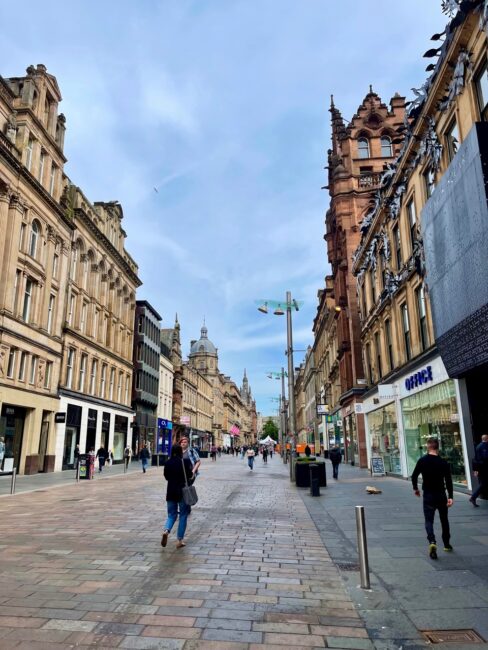
We strolled down Buchanan Street and spied the Hotel Chocolat. This is not a lodging where Wily Wonka stays, but a store that we first visited in Edinburgh that sells some of the best chocolate I’ve ever tasted. We bought some in Edinburgh, ostensibly as presents for friends but by the time we had reached Glasgow, we had devoured all the presents. We’d return on the last day here and purchase some more.
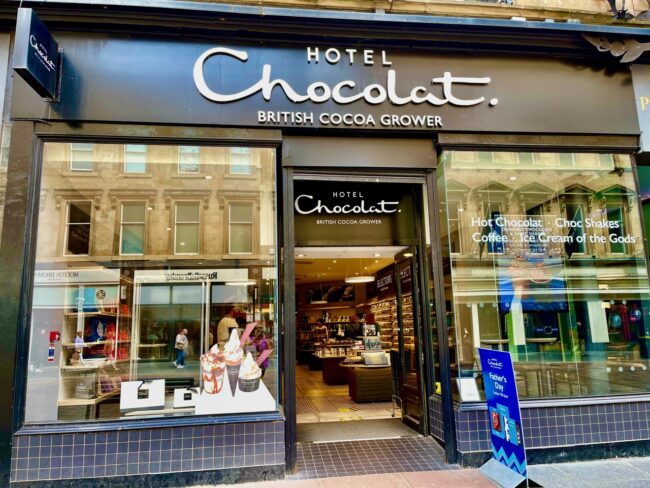
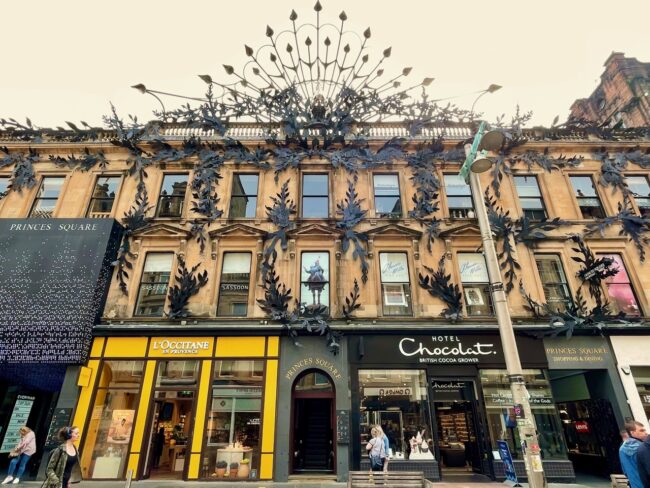
As we walked toward famed George Square, in front of the Royal Exchange, we once again saw an equestrian statue of the Duke of Wellington (as we did in Edinburgh) with a traffic cone resting on his head. “I guess this cone on Wellington, unlike the beef dish, is not rare,” I surmised.
The sculpture dates from 1844, but why the cone? According to Culture Trip, “The first documented sightings of the Duke’s conical hat date back to the 1980s.” and alcohol played a part. The prank eventually became a tradition. At one point fines were levied for anyone caught coning the Duke. Then they “doubled the height of the plinth to around six feet” to dissuade would-be cone toppers. It didn’t work, and the cones kept coming. Finally, a Facebook “Keep The Cone” campaign with 75,000 likes and a petition signed by 10,000 signatures (both of which took just 24 hours to garner support from Glaswegians) won out, and the cone is now an indelible part of Glasgow culture.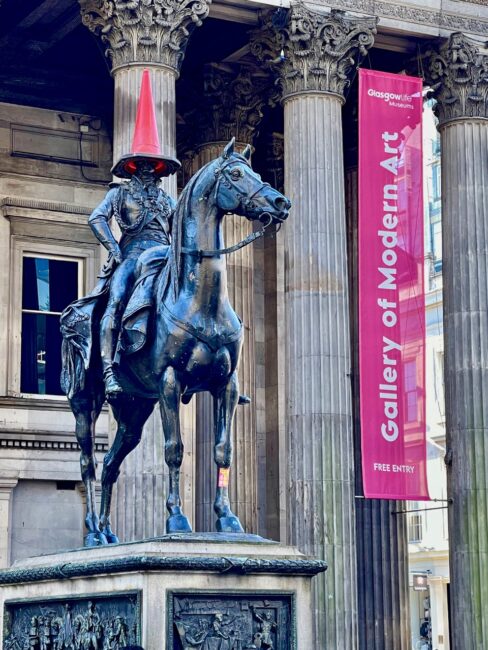
We ducked into the nearby Gallery of Modern Art, but knowing our affinity for modern art we just as quickly ducked out. What in the name of Joan Miró were we thinking, although this painting I found while perusing the internet is pretty good. Maybe we should give modern art another chance.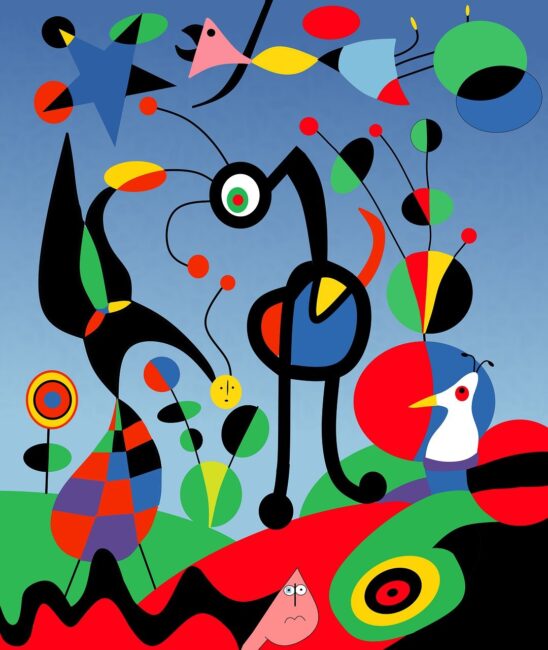
In another couple of minutes we were at Glasgow’s principal civic meeting place, George Square, which has been the center of Glasgow activity since 1787. It was named after King George III, who’s most recent claim to fame is being the funniest character in Hamilton. “John Adams?”
In the center of the square is the statue of Sir Walter Scott.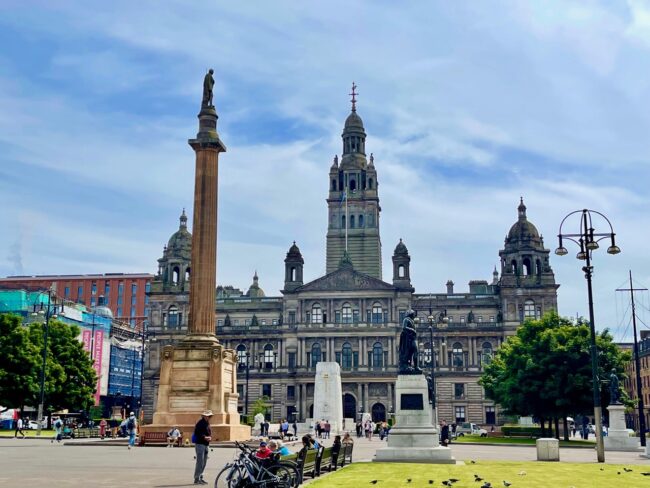
Other statues in the square include the Father of the Industrial Revolution James Watt, Robbie Burns (we were on a first name basis by now) and an equestrian state of Queen Victoria commemorating her first visit to Glasgow in 1849. I think she would have preferred a cone on her head.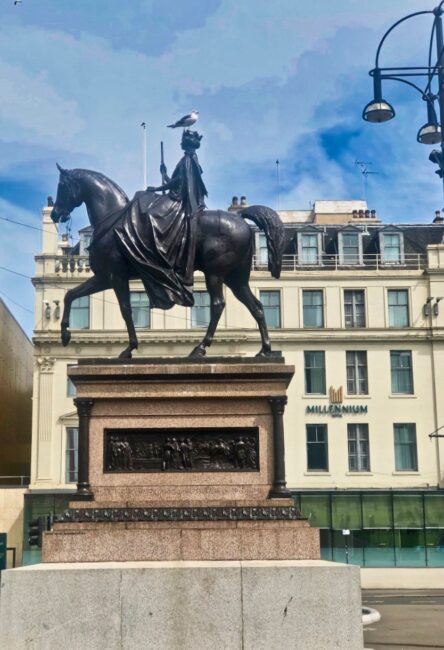
We walked back to Buchanan Street and ducked in the lab, but no scientists could be found. Just off Buchanan, The Lab serves cocktails, including its famous test tube shots. Not wanting to pass out before dinner, we settled on beer and wine (photo from internet).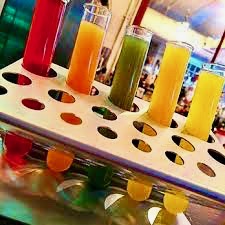
I had made 7:45 reservations at The Italian Kitchen (64 Ingram Street), which gets rave reviews.
My bruschetta and veal marsala were both delicious.
Kim and Mary’s Focaccia Pizza was also tasty.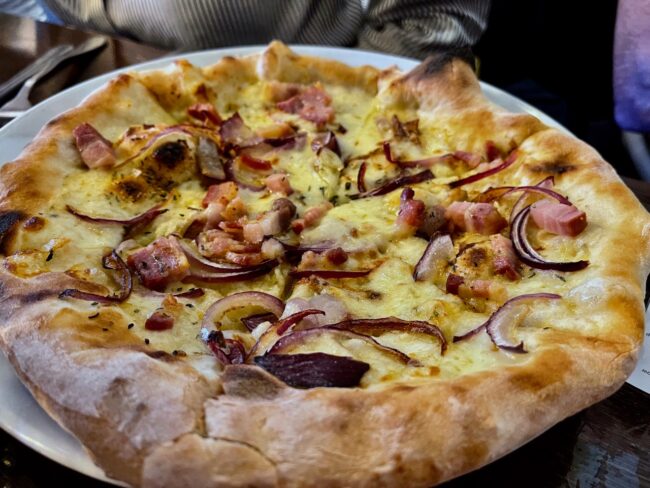
And, of course, I had to have that apple tart for dessert.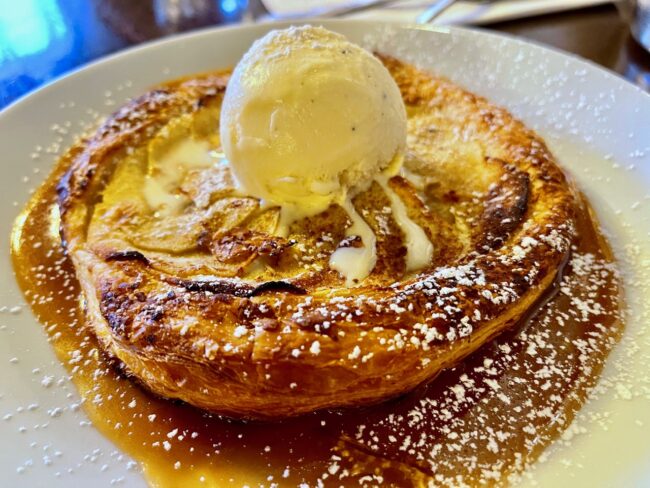
We geared up for one big last full day in Glasgow, and made the most of it.
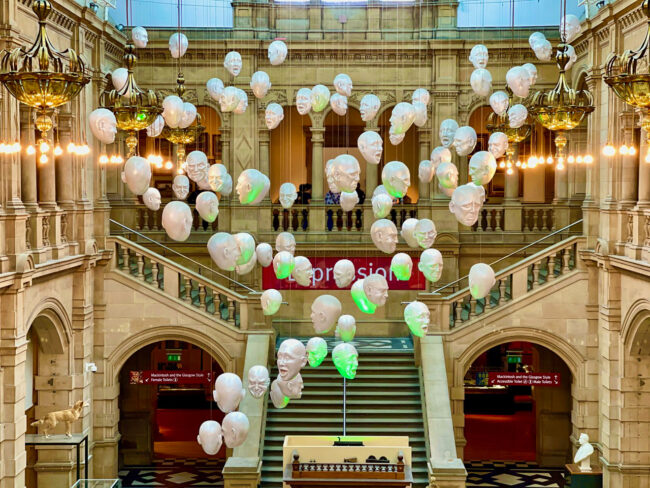 We’d head to a world-class art museum with a number of fascinating pieces, a gigantic medieval cathedral (yep, one more), a necropolis on a hill with astounding views and a gorgonzola gnocchi for the ages.
We’d head to a world-class art museum with a number of fascinating pieces, a gigantic medieval cathedral (yep, one more), a necropolis on a hill with astounding views and a gorgonzola gnocchi for the ages.
In order to return to the U.S. we would have to test for Covid the following day, which would prove to be quite a weird experience and told us the days of testing to come back were nearing its conclusion.
CHAPTER TWENTY ONE: ON THE GO IN GLASGOW
Days Twenty Two & Twenty Three: The Most Visited Museum In The UK Outside London, Elvis Has Not Left The Building, Where Do They Land That Thing?, Heads Up, One Final Cathedral, Tombs With A View, Really Our Last Italian, Going Green and Is This Any Way To Test For Covid?

